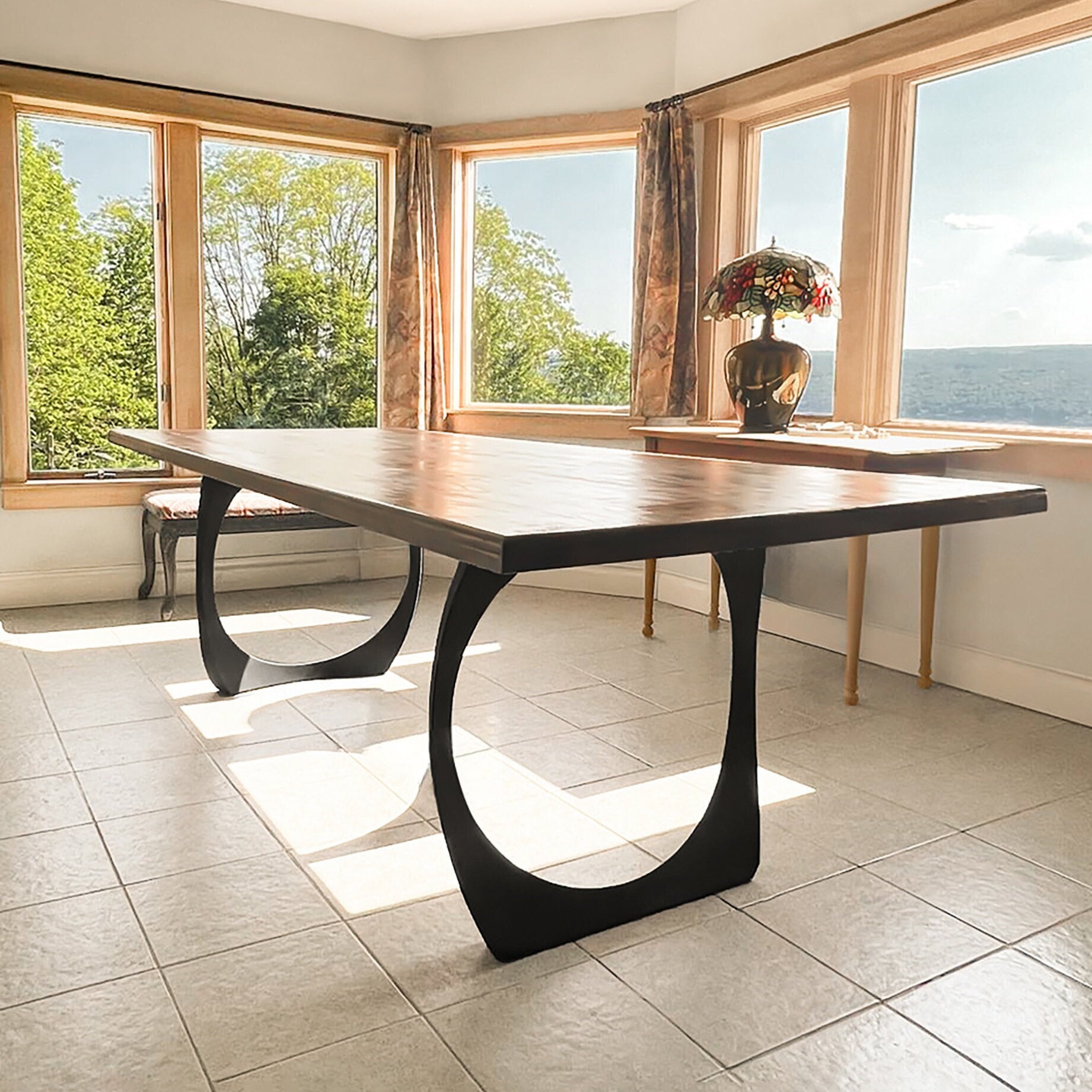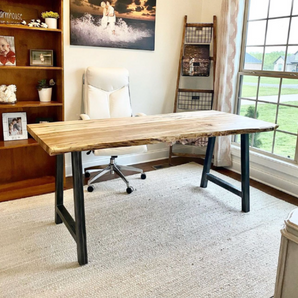Exactly how to Select the Perfect Dining Room Table Legs for Your Home Decoration
Exactly how to Select the Perfect Dining Room Table Legs for Your Home Decoration
Blog Article
An In-depth Take A Look At Table Leg Styles: Discovering the Suitable Suit
Choosing the ideal table leg design is essential for both visual allure and useful functionality. Typical 4 legs provide classic elegance and security, while the pedestal base provides raised legroom and a modern appearance. For those with larger tables, trestle legs ensure sturdy assistance, whereas hairpin legs present a mid-century contemporary vibe with their minimal style. The x-shaped legs blend modern style with boosted security. Each of these options brings special advantages, making the option much more than just a matter of choice. Check out better to find which design completely complements your eating space and lifestyle.
Typical Four Legs
Among the numerous kinds of eating table leg styles, the traditional four-leg layout remains an ageless choice for numerous households. 4 legs provide well balanced assistance, ensuring the table continues to be stable and capable of birthing considerable weight (dining room table legs).
From an aesthetic point of view, the traditional four-leg style can be quickly adapted to various indoor styles. Whether crafted from timber, metal, or a combination of products, these legs can be elaborately sculpted, smooth and minimalistic, or anything in between. Their convenience allows them to match both rustic and contemporary settings flawlessly.
In addition, the simple structure of the four-leg layout assists in convenience of motion and placement within a space. Unlike even more facility bases, this style lessens blockages, giving sufficient legroom for diners. In summary, the conventional four-leg table leg style marries sustaining sophistication with functional functionality, making it an astute option for those looking for both kind and feature in their dining furniture.
Stand Base
Frequently celebrated for its sophisticated and space-efficient design, the stand base is a distinguished option to the standard four-leg setup in eating table leg designs. Without corner legs, restaurants are afforded greater liberty of activity, making it an excellent choice for round and oval tables that advertise even more intimate and inclusive events.
The main column itself uses a canvas for intricate designs and imaginative expressions, adding an aspect of aesthetic rate of interest beneath the table. In summary, the pedestal base integrates performance with style, making it an improved and useful alternative for diverse dining atmospheres.
Trestle Legs
Trestle legs provide a robust and classic foundation for dining tables, characterized by their horizontal cross-bracing and strong assistance beam of lights. Stemming from middle ages times, this style has advanced yet preserved its vital structure, making it a seasonal favorite in both conventional and modern setups. The main trestle light beam, often sustained by two or more upright articles, offers phenomenal security, allowing for larger table sizes without the requirement for additional legs.
A substantial advantage of trestle leg tables is the ample legroom they supply. Unlike tables with four corner legs, the lack of obstructions at the table's sides provides unobstructed room for chairs and diners, improving convenience and availability. This makes trestle tables ideal for fitting bigger events, whether in an eating space top article or a reception hall.
From rustic farmhouse to sleek modern-day layouts, trestle legs can be tailored to suit private tastes. Their long-lasting allure and practical advantages make trestle legs a compelling selection for those looking for both design and functionality in their eating table.
Barrette Legs

The appeal of barrette legs exists in their simpleness and versatility - dining room table legs. Available in a series of products, consisting of steel and brass, they can be completed in numerous colors to match different interior designs. Whether coupled with a rustic wood table top or a contemporary glass surface, barrette legs effortlessly mix capability with a touch of vintage beauty
Durability is one more notable function of barrette legs. Regardless of their fragile look, these legs are crafted to bear significant weight, ensuring the dining table continues to be steady and secure. Additionally, they are dining room table legs relatively simple to set up, making them a popular choice for do it yourself fanatics and specialist furnishings manufacturers alike.
X-Shaped Legs

Created from products such as steel, timber, or a mix of both, X-shaped legs can be tailored to match various design choices. Steel legs typically lend a streamlined and commercial feel, ideal for loft-style houses and contemporary dining spaces. On the other hand, wood X-shaped legs provide a warmer, much more rustic allure, appropriate for farmhouse or diverse insides. The flexibility in products permits property owners to personalize their dining tables to much better fit their overall style system.
Furthermore, the design behind X-shaped legs makes sure even weight distribution, decreasing the danger of tottering and improving longevity. This makes them particularly appropriate for larger table that call for additional support. Essentially, X-shaped legs blend sensible design with modern looks, making them a classic selection for varied eating atmospheres.
Final Thought
A detailed understanding of dining table leg styles reveals the distinct characteristics and advantages of each layout. Typical 4 legs use security and ageless charm, while pedestal bases provide legroom and a structured look. Trestle legs make sure robust assistance for bigger tables, see post and hairpin legs introduce a mid-century modern visual. X-shaped legs integrate contemporary layout with enhanced stability. Picking the proper leg style ensures both useful and visual fulfillment in any type of dining room.
Report this page